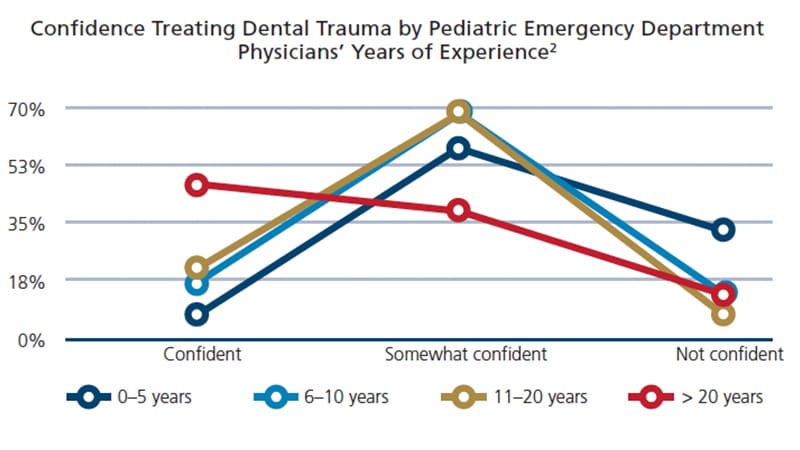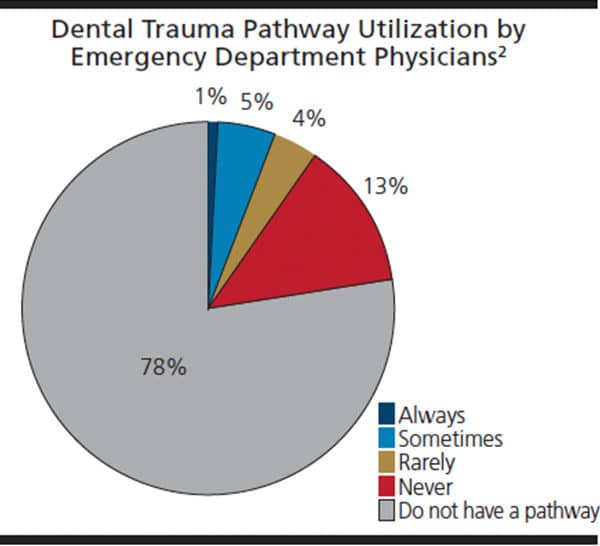Responding to Pediatric Dental Trauma
From falls learning to walk to sports injuries and accidents, kids are at risk of injuring their teeth and gingiva.
From falls learning to walk to sports injuries and accidents, kids are at risk of injuring their teeth and gingiva. By the time children turn 14, an estimated 30% have experienced some type of dental injury.1 In many cases, adults rush a child with an acute dental injury to an emergency department rather than the dentist, making it important for pediatric emergency physicians to be capable of managing these situations. Achieving the best possible outcomes is often time-sensitive, as the survival of injured teeth may hinge on how quickly they’re treated.
Yet, a recent study by Cully et al2 suggests pediatric emergency physicians may not have all the training and resources needed to confidently manage acute dental injuries. A survey of 285 pediatric emergency physicians found that a third of those with five or less years of experience reported not being confident in their ability to treat dental trauma. Across all experience levels, 61% reported being “somewhat confident” and 20% indicated they were “not confident” in handling dental trauma.2 Earlier studies have also reported low confidence among emergency physicians when treating dental trauma.3,4
The Cully study also revealed a lack of utilization of decision-making pathways that could help emergency physicians deliver prompt, evidence-based care for dental trauma. Such pathways also aid decisions of when to call a dentist for a consult. In fact, only 6% of surveyed physicians used decision-making pathways either always or sometimes.2
The implications for dentists who treat children are twofold. First, it under scores the importance of collaborating with emergency physicians and working to improve their dental trauma training, as the American Dental Association advocates. Second, it signals the need to educate parents and caregivers about dentists’ expertise in caring for a child who has suffered an acute dental injury — and under what circumstances calling the dentist before seeking emergency department care is the most appropriate course of action.
REFERENCES
- American Dental Association Council on Access, Prevention and Interprofessional Relations. Best Practices Guide: 10 Steps to Medical-Dental Collaboration. Available at: ada.org/~/media/ADA/Public%20Programs/Files/ ADH%20PDFs/ADA_10_Steps_Medical-Dental_Collab.ashx. Accessed May 17, 2018.
- Cully M, Cully J, Nietert PJ, Titus MO. Physician confidence in dental trauma treatment and the introduction of a dental trauma decision-making pathway for the pediatric emergency department. Pediatr Emer Care. April 24, 2018. Epub ahead of print.
- Abu-Dawoud M, Al-Enezi B, Andersson L. Knowledge of emergency management of avulsed teeth among young physicians and dentists. Dent Traumatol. 2007;22:124–126.
- Trivedy C, Kodate N, Ross A, et al. The attitudes and awareness of emergency department (ED) physicians toward the management of common dentofacial emergencies. Dent Traumatol. 2011;28:121–126.
From Decisions in Dentistry. June 2018;4(6):46.


